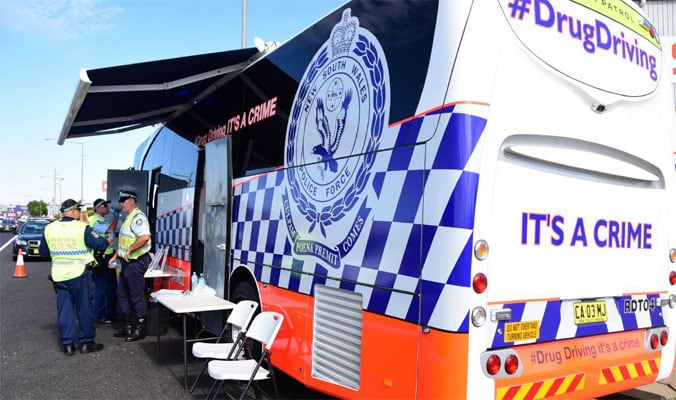Most states and territories have “declared war” on drug driving in the last couple of years. New South Wales is presently leading the charge by announcing that by 2017 they will increase the number of roadside tests to 200,000.[1]
Our alcohol driving laws have been around for many years and there are now enormous amounts of data regarding its effect on driving, blood concentration levels that give rise to impairment and the likelihood of being involved in an accident.
This pervasive concept inherently coaxes us to evaluate the drug driving laws by similar standards. Unfortunately, the policy behind these laws and the manner in which they are being enforced is not at all like alcohol driving laws and consequently we must assess them from other perspectives or consult experienced criminal lawyers for legal advice.
Each state and territory has now enacted some form of roadside drug testing legislation. However, the incidence of that legislation and the now increased focus on enforcing it have not been accompanied by any educational material or even a consistent approach. Some commentators say the reason for this is that it’s merely a campaign against drugs cloaked as a road safety campaign.
That is an interesting conundrum because users who are prosecuted for drug driving do not ordinarily face criminal charges for possession or use of illegal drugs; and yet the possession and use of the drugs that are tested for is itself a crime.
Naturally, however, people want to know what the tolerance level is and also when it is safe to drive after having certain drugs. This is a natural inclination, as referred to above, because of our tendency to compare it with drink driving, where we know how many drinks it takes to get to the limit and how long it will be before it is out of our system enough to safely drive.
In keeping with the effectively zero tolerance policy, the states and territories have not officially released any information about impairment levels or how long after using a drug will it show up in a roadside drug test. The have however “leaked” some expert opinions on the time issue and, as might be expected, there is not consensus of opinion. The opinions issued from various departments across the country range from a 24-hour detection period, through “detection periods vary”; and all the way to “it is illegal to drive if you test positive”.[2]
This almost Epimenidean[3] paradox becomes even more torturous when the Courts themselves are critical of the laws as unclear. In the now famous case of Joseph Carrall in the Lismore Magistrates Court, Carrall was charged with drug driving after a positive roadside test. The issue was that this was the second roadside test in a few weeks. When he tested positive in the first test, according to Carrall, the officer administering the test told him that he should wait one week after using cannabis before driving to ensure that it would not show up in a test.[4]
Carrall’s evidence, which was accepted by the Magistrate, was that he had not used cannabis for at least 9 days and relied on the ‘advice’ he received from the officer. He was subsequently acquitted of the second charge on the basis that he made an honest and reasonable mistake of fact.
The information from Government bodies details a zero tolerance policy to the having traces of illegal drugs in your blood while driving. However, this is in sharp contrast to the words of the Magistrate in Carrall’ case who reportedly said “Certainly it was not the aim of the ministers that if you consume cannabis [at all] you cannot drive [ever]”[5]
Turning to the theory of honest and reasonable mistake of fact, there will likely be questions about whether or not it is appropriate for a person to rely on an informal statement made by a representative of the Government (in this case a police officer) as giving rise to the state of affairs (albeit incorrect) that the person believes to be true. When engaging in acts that are illegal in their own write, there are questions about whether or not an incorrectly held belief about some of the circumstances can found a defence of honest and reasonable mistake.[6]
Given that Carrall’s case is likely to “open the floodgates” of defences on this basis, it is only a matter of time before it will be tested in appellate jurisdictions. It will likely become increasingly difficult to maintain the defence, particularly in light of the widely publicised conflicting opinions on how long it is before the drug can no longer be found in a roadside test.
That is, if you are aware that there is widespread uncertainty about the time that the drug remains detectable; and you are also aware that none of the laws are based on any tolerance level, it would be quite difficult for you to argue that you made an honest and reasonable mistake of fact in relation to the time period between when you took the drugs and when you got behind the wheel.
[1] Blackwell, E, 2016, Hazy Drug Driving Advice on Australian Roads, Huffington Post visited 8 April 2016 <http://www.huffingtonpost.com.au/2016/02/23/rdt-australia_n_9269504.html>.
[2] Ibid.
[3] As in logical paradoxes described by Epimenides.
[4] McVeigh, S, 2016, How One Man Challenged NSW’s Drug Driving Laws and Won, Australian Broadcasting Commission Tripple J Hack, visited 11 April 2016 <http://www.abc.net.au/triplej/programs/hack/drug-drivng-nsw/7141626>.
[5] McVeigh opcit.

